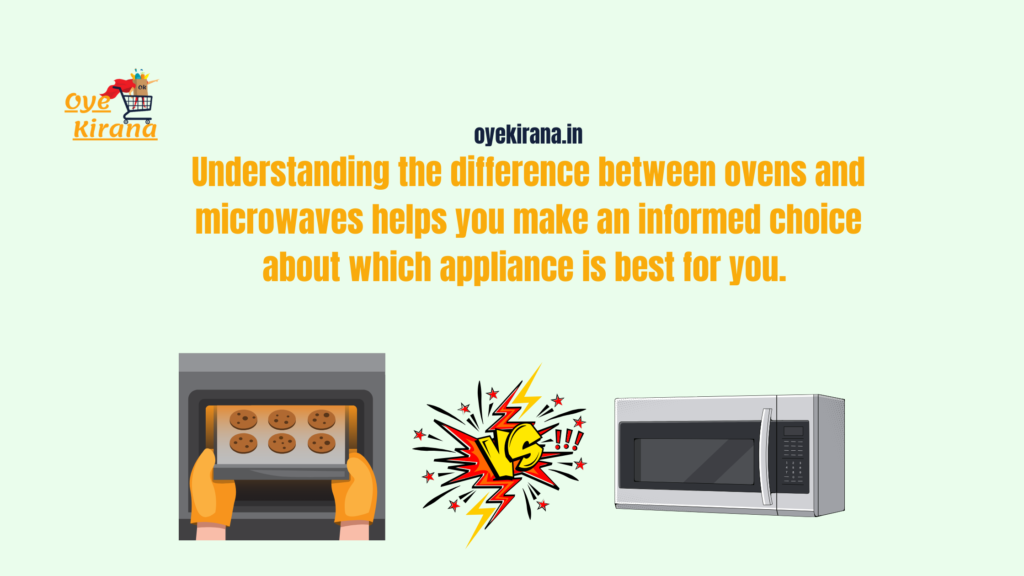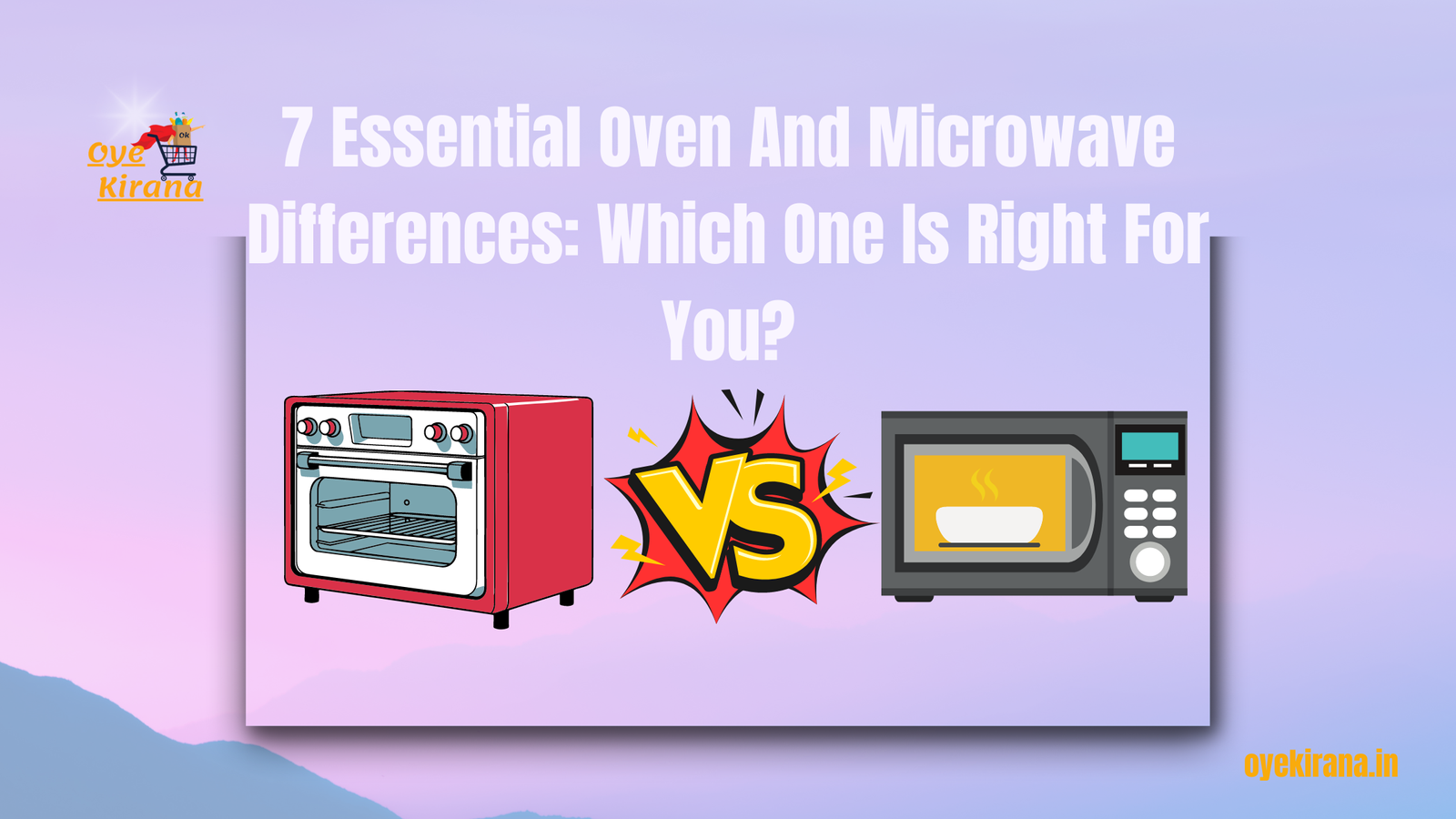Understanding the oven and microwave difference is crucial when deciding which appliance best suits your cooking style and kitchen needs. Both are indispensable tools, yet they serve distinct purposes that can significantly impact your results in the kitchen. Whether you’re a seasoned chef or a busy professional, knowing the 7 essential ovens and microwaves differences can save you time, money, and frustration in your culinary adventures.
Imagine this: you’re craving a homemade pizza with a perfectly crisp crust. Do you turn to your trusty oven, or can your microwave do the job just as well? The answer lies in understanding how each appliance works, the types of dishes they excel at, and how they fit into your lifestyle. While ovens are the go-to for baking, roasting, and grilling, microwaves shine in speed and convenience, making them ideal for quick meals and reheating leftovers.
But there’s more to the story than just cooking methods. From energy consumption to size, cost, and even health considerations, each appliance has its unique advantages. In this blog post, we’ll break down the key differences so you can confidently decide which one deserves a spot in your kitchen. By the end, you’ll know exactly which appliance is the perfect match for your needs—whether you’re whipping up a gourmet dinner or simply warming up last night’s takeout.
What Are The Oven And Microwave Differences?
When you’re deciding between an oven and a microwave, it’s important to know how each one works and what it’s best used for. Let’s break down the differences in a way that’s easy to understand.
Cooking Method
- Ovens: Ovens cook food using a method called convection. This means they use heat, either from gas or electricity, to cook your food. The heat surrounds the food and cooks it evenly from the outside in. Imagine baking a cake—the oven heats up, and that warmth makes the cake rise and turn golden brown. This is why ovens are perfect for baking cookies, roasting vegetables, or grilling meat. They give you that nice, even cook that you can’t get with other appliances.
- Microwaves: Microwaves work in a completely different way. They use microwave radiation to cook food. Don’t let the word “radiation” scare you—it just means that the microwave sends out waves that make water molecules in the food vibrate, which produces heat. This method cooks food quickly, but it mostly heats from the inside out. So, while a microwave can reheat your leftovers in a flash, it’s not the best tool for getting a crispy crust on a pizza or a nice, even bake on a cake.
Cooking Speed
- Ovens: Ovens take their time to cook food. They need to preheat, which can take several minutes, and then the actual cooking process can be long, especially for dishes like casseroles or roast chicken. If you’re baking a cake or roasting a turkey, you’ll need to set aside plenty of time.
- Microwaves: Microwaves are super speedy. They don’t need to preheat, and they can cook or reheat food in just a few minutes. This makes them a great choice for busy days when you need to get food on the table fast, like heating up last night’s dinner or making a quick snack.
Types of Dishes
- Ovens: Ovens are ideal for dishes that need a crispy texture or need to rise. Think about all the things you love that are baked in an oven—like bread, cakes, cookies, and roasted vegetables. Ovens can also handle large meals like lasagnas or whole chickens, giving them that delicious, browned top and juicy inside.
- Microwaves: Microwaves, on the other hand, are great for simple, quick dishes. They’re perfect for popping popcorn, reheating soup, or defrosting frozen foods. However, microwaves aren’t great for things like baking or roasting, where you need an even, consistent heat.
Energy Use
- Ovens: Ovens tend to use more energy because they take longer to cook food and need to be on for extended periods. If you’re cooking a large meal, your oven will be running for a while, which uses up more electricity or gas.
- Microwaves: Microwaves are more energy-efficient because they cook food so quickly. Since they’re only on for a few minutes at a time, they use less energy overall, which can save you money on your electricity bill.
Size and Space
- Ovens: Ovens are typically large appliances that need a dedicated spot in your kitchen. They have a big capacity, which is great for cooking large meals, but they do take up more space.
- Microwaves: Microwaves are much smaller and can easily fit on a countertop or be mounted above your stove. However, because of their size, they have a smaller capacity, which means you might need to cook in batches if you’re making a big meal.
Cost and Maintenance
- Ovens: Ovens can be more expensive to buy and maintain. They’re a bigger investment upfront, and they might need regular cleaning and occasional repairs. For example, if the heating element goes out, it can be costly to fix.
- Microwaves: Microwaves are generally cheaper to buy and easier to maintain. They don’t require much upkeep, and if something goes wrong, they’re usually more affordable to replace than to repair.
Health Considerations
- Ovens: Ovens allow you to cook in ways that can be healthier, like baking or grilling, which often requires less oil than frying. Plus, cooking in an oven can help retain more nutrients in some foods, like vegetables, compared to boiling.
- Microwaves: Microwaves are safe to use, but some people worry about the effects of microwave radiation or whether it affects the nutrients in food. However, studies have shown that microwaving food is safe and doesn’t significantly affect its nutritional value. In fact, because microwaves cook food so quickly, they can actually help preserve more nutrients than some other cooking methods.
Understanding the difference between ovens and microwaves helps you make an informed choice about which appliance is best for you. Ovens are perfect for baking, roasting, and cooking large meals, while microwaves excel at quick, convenient cooking and reheating. Depending on your cooking habits, kitchen space, and lifestyle, one of these appliances will be the right fit for you.

Conclusion
Choosing between an oven and a microwave comes down to understanding how each one fits into your cooking routine. Ovens are ideal for baking, roasting, and preparing large meals with that perfect golden finish, while microwaves are unbeatable for quick, convenient cooking and reheating. Both appliances have their unique advantages, and knowing the differences can help you make the right decision for your kitchen.
Now that you know the difference between ovens and microwaves, which one will you choose? If you found this guide helpful, don’t forget to share it with your friends and family. We’d also love to hear your thoughts—do you prefer using an oven or a microwave? Drop a comment below and let us know! And if you enjoyed the post, give it a like and stay tuned for more tips and insights.




